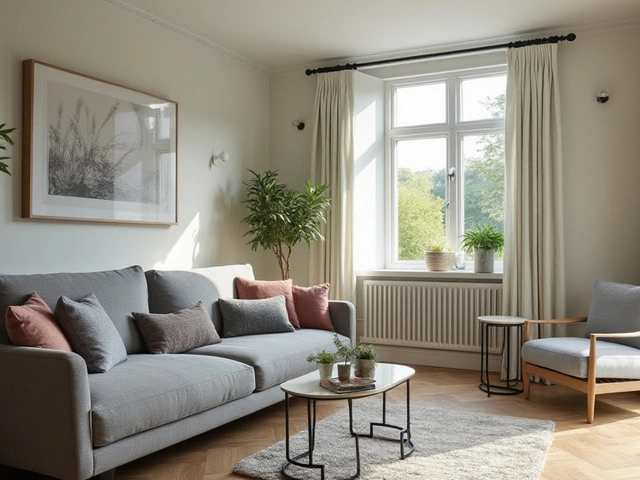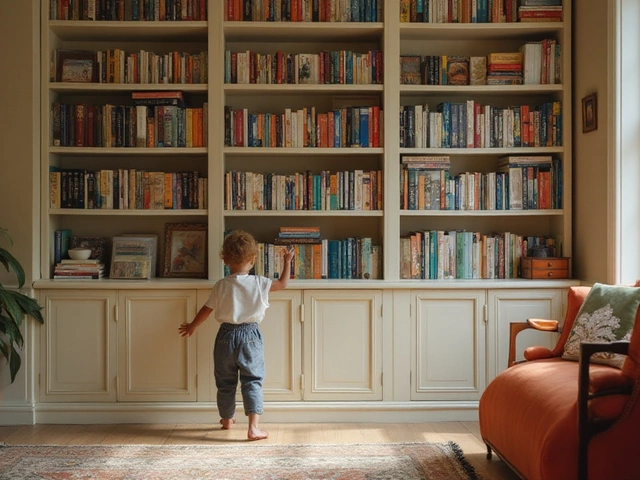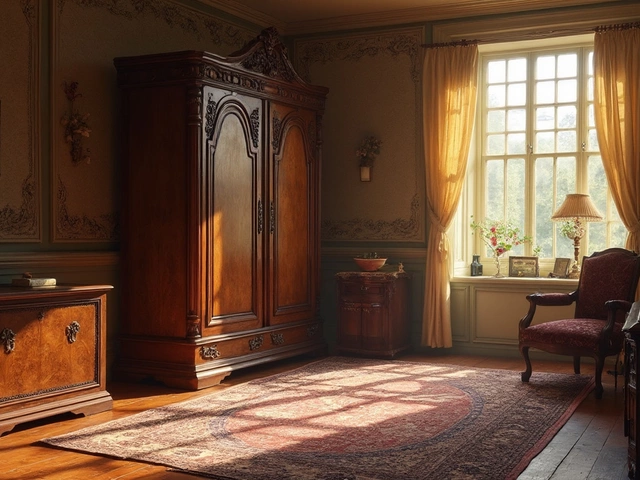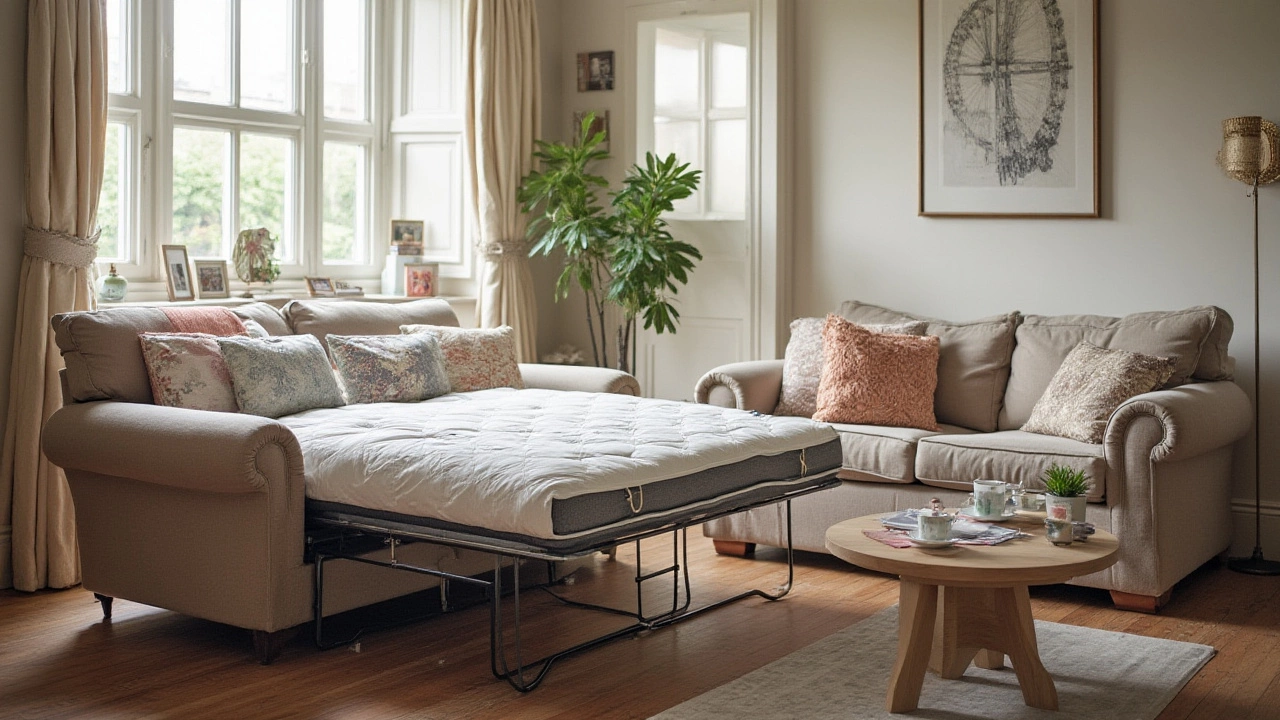 9
Jul,2025
9
Jul,2025
Ever had friends crash at your place and realize your couch isn’t built for overnight guests? Or maybe you’re hunting for a piece of furniture that’s more than just a comfy seat for binging TV shows. People toss around terms like sleeper sofa and sofa bed, almost like they’re the same thing, but—spoiler alert—they’re not. Knowing the difference could save you time, money, and backaches. It can even change the vibe of your whole living room. Let's settle the debate once and for all, and figure out which one actually makes sense for your life—and your space.
Sleeper Sofas: The Hidden Bed Champion
Alright, let’s crack open the case of the sleeper sofa. If you walk into a living room and see what looks like your regular, everyday sofa, you could easily be fooled. That’s kind of the point. A sleeper sofa hides its true identity behind plump cushions and sturdy arms.
The big deal about sleeper sofas is the pull-out mattress mechanism. It’s basically a bed-in-a-box, but the “box” is your sofa frame. Traditionally, sleeper sofas tuck away a full metal frame with a folding mattress inside. You lift up the cushions, yank out the frame, unfold it, and voilà—you’ve got a bed ready to go. Most models can transform into anything from a twin to a king-size bed, depending on how big your sofa is to begin with.
One thing to note: sleeper sofas tend to be a bit bulkier than regular sofas or even sofa beds because they have to make room for that foldable mattress. You’ll have to measure your space to make sure you’ve got enough clearance to stretch it out fully. Manufacturers have gotten clever, though. These days, you can find relatively sleek sleeper sofas that don’t take over your entire room, but don’t expect something as slim as a standard loveseat.
Let’s talk about the comfort level. Twenty years ago, the mattress inside a sleeper sofa felt about as cushy as a trampoline. Either you got poked by support bars, or the mattress was as thin as a yoga mat. But here’s a fun fact: modern sleepers often use memory foam or air-over-coil technology. According to a 2024 industry survey, 82% of sleeper sofa owners now report “good” to “very good” sleep quality when compared with earlier models. Brands have really upped their game.
| Feature | Sleeper Sofa | Traditional Sofa Bed |
|---|---|---|
| Bed Mechanism | Separate, pull-out mattress | Folds flat with cushions |
| Sleeping Surface | Memory foam, innerspring, or air mattresses | Upholstery and seat cushions |
| Size Range | Twin, full, queen, king | Usually full or queen |
| Comfort Score* | 7.5/10 | 6/10 |
| Setup Time | 2-5 minutes | 1 minute or less |
*Average user rating, 2024 Apartment Living Survey
Wondering about the weight? Sleeper sofas are not lightweights. You’ll probably need a friend (or two) if you’re moving one. But that weight is what allows it to do double-duty—sturdy seating by day, guest-ready bed by night.
On the money side, sleepers usually cost a bit more than regular sofas—think an extra $150–$500, depending on the mattress quality. Still, if you often host sleepovers or just want a multipurpose piece, that cost-per-use shrinks pretty fast. Here’s something people sometimes miss: the mattress inside usually lasts five to seven years before it starts to sag and should be replaced, which can cost about $100–$300 for a decent upgrade.
Extra tip: If you want your guests to actually say thanks in the morning, invest in a memory foam topper. Even if your sleeper mattress is on the thin side, a topper can make a world of difference.
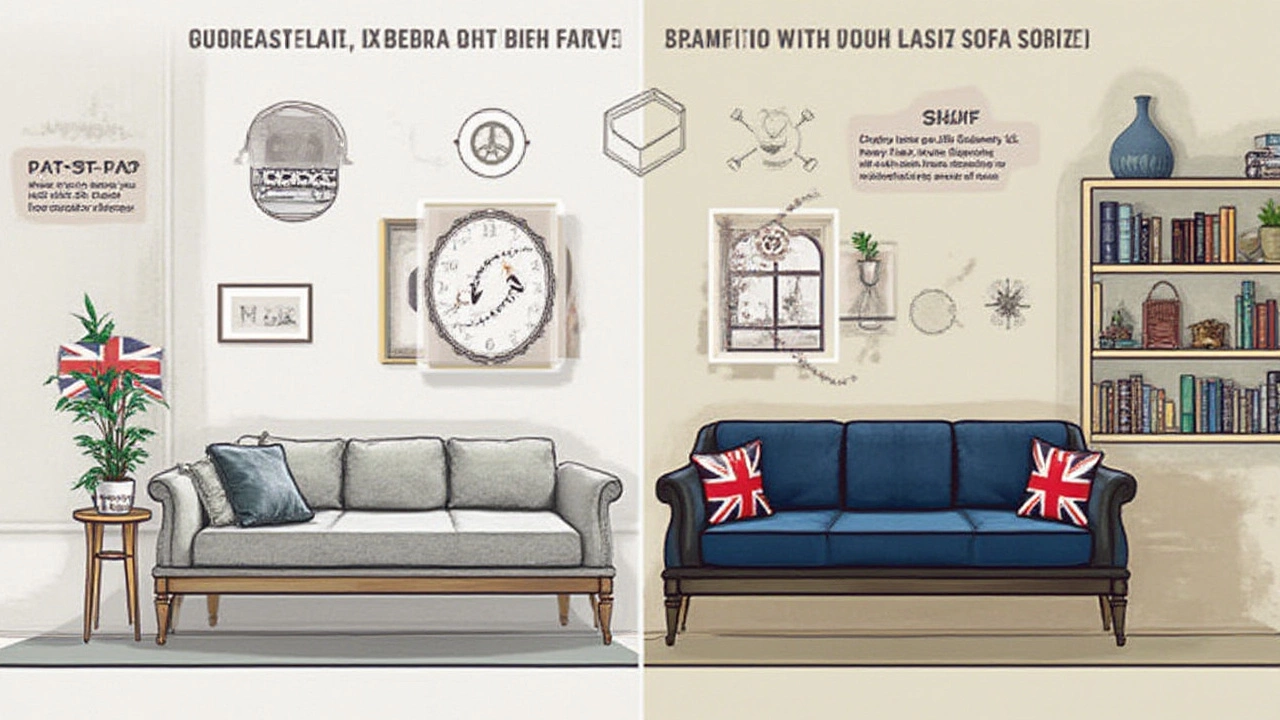
Sofa Beds: Simpler, Quicker, and Space-Saving
Now, let’s shift gears to sofa beds. Unlike sleeper sofas, they don’t hide a separate mattress inside. The sofa itself becomes the bed. Sounds a little like furniture magic, right? Essentially, when it’s time to sleep, you just flatten the backrest and the seat, turning the whole thing into a bed-sized platform. Usually, it’s one smooth surface—the same foam or upholstery you were sitting on is now your bed.
The standout win for sofa beds is their size. They’re usually more compact and lighter because there’s no hidden frame or mattress to worry about. If you live in a studio, dorm, or just want to maximize every inch of your place, a sofa bed is way easier to move and fit in small, tight spots.
Setup is almost instant. You don’t have to deal with metal frames, folding legs, or cushions all over the floor. Many sofa beds use the “click-clack” system, where you just push the backrest until it clicks, then fold it down flat. Some even let you adjust the angle for lounging or semi-reclined Netflix marathons.
On the comfort front, this is where opinions start splitting. Because there’s no separate mattress, you’re sleeping right on the upholstery. Depending on the model, this could be a dense foam slab or, less ideally, something with a middle seam where two pieces meet. Not the end of the world for one or two nights, but if you plan to use your sofa bed for long-term sleeping, you’ll want to test it in person.
Here’s something wild: Some sofa beds out there are designed with built-in storage under the seat, perfect for stuffing extra pillows, blankets, or even winter sweaters. That’s a big deal if you don’t have extra closets. According to a 2023 IKEA survey, dual-function furniture is a top request for city dwellers under 30.
Material makes a big difference, too. Choose high-resilience foam if you want your sofa bed to actually support your spine at night. Skip the cheap ones you see in discount stores—that lumps-and-bumps feeling will ruin any chance of decent sleep. Most people use a thin mattress topper to add some plushness.
If you’re hunting for a budget option, sofa beds generally cost less than sleeper sofas. They skip the metal hardware and complex construction, which keeps prices lower—sometimes even under $300 for a stylish futon. But watch out: the price usually matches the materials, so do some poking around for solid warranty policies and return windows.
Got young kids or pets? The simple mechanism of most sofa beds means fewer pinch-points for little fingers, and fewer places for toys (or cat hair) to disappear. You can actually clean under them, which is a plus if you’ve ever lost a sock to the void beneath a sleeper sofa’s metal frame.

Which One Fits Your Life?
The big picture comes down to two main things: how often you need a real bed, and how much space you actually have. Here’s the formula—heavy guests, regular sleepovers, or family visits? Go for a sleeper sofa. Need something small, lightweight, or you’ll mostly be napping, not overnighting? Sofa bed is the winner.
Another thing people forget: aesthetics. Some sleeper sofas look like regular couches and blend in perfectly with your living room. Sofa beds, especially futon-style ones, sometimes have a more casual, minimalist vibe. If you love the mid-century modern look, check out some of the new convertible models with tapered wooden legs and low profiles—they look sharper than you might expect.
If you’re short on space (like a studio apartment or a guest room doubling as a home office), sofa beds make sense. They can double as a long reading bench or crash pad. If you need to haul your furniture for a move or you’re worried about getting through the front door, sofa beds are lighter and less awkward. You can usually fit one in an elevator or even the back of an SUV if you remove the legs first.
But don’t just focus on the mechanism—think about usage. According to a 2024 study from Apartment Therapy, 54% of people who bought sleeper sofas never actually used the pull-out bed more than twice a year. That’s a lot of money for a feature that mostly stays hidden. Meanwhile, folks with sofa beds reported using the bed function at least twice as often, even if it wasn’t for overnight guests—sometimes just to stretch out and read, or for afternoon naps.
If sleeping comfort is your dealbreaker, test both types in-store. Lie down, roll around, give them the bounce test. Online reviews are super helpful, but comfort is personal, and your back will thank you for doing your homework. Bring a measuring tape—not every product page tells you the actual width when the bed is open. Measure your floor space and trip hazards so you don’t stub a toe at 2 a.m. when you’re half-asleep.
- Space Saving: Sofa beds usually win here, especially for tight apartments.
- Comfort: Sleeper sofas with updated mattresses take the lead for real sleep quality.
- Versatility: Both are flexible, but sleeper sofas look (and feel) more like classic couches.
- Ease of Use: Sofa beds set up in seconds, ideal if you’re always on the move.
- Longevity: Sleeper sofas tend to be more durable, but sofa beds are often easier to move and clean.
Here’s a hack: if you need both storage and a guest bed, check for models that combine the best of both worlds—a section that lifts up for blankets and a mattress that folds out or flattens down. Brands like West Elm and IKEA keep launching new hybrids every year, so don’t settle for the first thing you find.
Final tip: If price matters, wait for fall or late winter. Furniture stores usually discount sleeper sofas and sofa beds the most during big clearance events, right before they roll out next year’s styles.
